I was maybe 12 years old when I started having repetitive strain injury (RSI) symptoms.
It started with general soreness, and over years extended into nerve pain and tenderness all over my hands and wrists, concentrated especially in the outer fingers from reaching for the Shift/Ctrl/Alt/Enter keys, and forearms from poor alignment. I’d used whatever keyboards came with our computers — an IBM Series M, a Macintosh ABD keyboard, and whatever flat thing had come with the computer of my very own I got in 7th grade. I noticed that I tended to have hand pain after playing video games with friends, but somehow they never seemed to… I remember a hand cramp so severe I was almost in tears after a long session of Altered Beast on a dear friends Sega Genesis. Something was odd about my hands.
The emergence of mainstream ergonomics
I got a Microsoft Natural in high school, which significantly ameliorated a the wrist alignment problem, but I ultimately lived with chronic pain for more than a decade due to (I now know…) the heavy forces and constant reaches of typing on a traditional QWERTY keyboard. Still, I felt legitimately *seen* when companies started trying to address the explosion of repetitive strain injuries (RSI). This curvy piece of space junk let me keep limping for a decade.
Back then, it was all lumped together inaccurately as “carpal tunnel syndrome” — the specific role of ulnar deviation and nerve impingement was just coming into broader understanding, as well as the general challenges of tendonitis and other overuse problems, to say nothing of chronic degenerative connective tissue diseases. The natural variety of RSI is truly as diverse as human anatomy and neurological pathology.m
Career Decisions
I was never able to do as much carefree coding as classmates in university, and ultimately decided I wouldn’t pursue computer science as a major on those grounds — I simply didn’t believe I could have a productive career as a full time coder.
Instead I chose the blanket “Engineering and Applied Science” major, which let me pick and choose across the disciplines, and I built a curriculum for myself in mechanical, electrical and software engineering, focusing as much as I could on project classes and supplementing with a range of other fascinating basic science classes (<3 geology!) along with product design, law, Japanese, and various other things.
I was constantly uncomfortable, constantly flirting with overuse. For one summer, I visited a teacher of the Alexander Technique, a somewhat hands-on mind-body-connection practice designed to help us learn how to use our bodies with greater awareness and kindness to ourselves. It was difficult to understand what was going on, being somewhat shrouded in pedagogy and a bit of metaphysics, but the basic gist was “Hey, maybe you could use your whole body to do things, rather than using youthful exuberance to abuse one muscle or limb at a time, and thus not strain so much?” It was a particularly difficult lesson in vulnerability for an invincible young man…
A minor catastrophe
After college I was working in Japan at Schlumberger KK, an oilfield services R&D center about 40 minutes southwest of Tokyo in Machida, when a typhoon soaked me on my bike ride to the office. My Natural was ruined, and I had to go back to a regular keyboard at work and my laptop at home.
I was crippled within about 72 hours. Couldn’t type or mouse at all, other than with ginger, whole-arm movements and a single outstretched finger — and even that led to further inflammation. I basically couldn’t work.
So… to the internet I went! I searched high and low for the most ergonomic keyboard options I could find, reading every review, testimonial and forum comment. I figured that if I was going to spend a small fortune getting something shipped over, plus the work of adaptation, I might as well swing for the fences.
It was during this search that I learned about the Datahand, as well as the Kinesis Advantage, which has many adherents even today. Both of these devices move the modifier keys (Shift Ctrl Alt) and important actions like Enter, Backspace and Tab to the thumbs instead of the outer fingers, which are very fragile. But the kinesis still had the deep travel and high force switches with which I was being forcibly reacquainted due to my MS Natural’s passing.
I was really struck by the Datahand’s complete inversion of the key placement problem. Bringing the keys *really* close to the finger seemed like a win-win proposition. The testimonials were really impressive. Literally hundreds of people describing how Datahand devices had changed their lives.
I decided to let the reviews be my guide, and in the process of reading them found a brief testimonial by an old college friend, Dave Zito, later founder of Miso Robotics (of “Flippy the burger-flipping robot” fame). I spoke with him about his experience with Datahand and he was effusive - so I decided to take the very expensive plunge. I paid the princely sum of $900 (almost $1500 today!) and in a couple of weeks had my first Datahand setup.
A New Era
It was a major transition. The key forces were so light I found myself accidentally pressing keys without thinking about it — my hands had been working so hard an moving so far for so long, it took time for my fingers to learn how to just *rest*.
I was surprised at how familiar the basic layout felt — only four letters change fingers in the DH layout, so I was able to type immediately, albeit slowly, as I adapted to the many thumb keys and the new mechanisms. I practiced at home first, an hour or so a day, and in a few weeks felt comfortable enough to bring them to work… but packed with a lot more care! I was slow, but finally acclimating. Over the next few months my typing speed and comfort steadily improved, and at 6 months I was typing as fast as I ever had on a regular keyboard, sometimes faster.
But the real treat was that my pain went away completely. With all the extra work of the traditional keyboard reduced to tiny motions of the fingers, and with the other heaviest-use keys moved to the thumbs, my tendonitis and nerve pain in the outsides of my hands disappeared.
I’ve been pretty much pain-free ever since. All RSI is overuse injury, and I still experience fatigue after long hours of work, but it’s just that — fatigue. It doesn’t hurt or linger for days. Datahand let me work full days in comfort. When I put my hands down on a Datahand, it feels like home.
Like the hundreds of people in the testimonials on the old Datahand website, and thousands of original Datahand customers, I credit Datahand with saving my career. I picked up a couple of spare units over the years as insurance.
A major catastrophe
In 2009, Datahand went out of business. They had operated for almost 20 years, been a publicly traded company, and supported many employees. The community of DH users was obviously distraught. A few people tried to reproduce the product part-for-part, but nobody was able to dedicate the necessary resources to do so in full.
Fast forward to 2022, I took one of my Datahand setups to Seattle on a work trip, but wasn’t particularly careful with the packaging — and of course broke a few keys in transport. I was gutted. These devices enable my livelihood. I decided I should find a reasonable offramp to understand what my options were if I ever had to give up on my remaining units — they’re quite robust and will probably survive the rest of my working life, but I’m a belt-and-suspenders kind of person.
I bought an ErgoDox,
and built a couple of alternative compact split ergo keyboards by hand.
They were fun, and felt like I could *maybe* survive with them, but coming home to the Datahand was just so much more comfortable and low-effort.
In learning about and building these minimalist keyboards (~40 keys, using layers to reach keys not in the main alphabet), I started describing what I was looking for — lightest possible touch and minimal finger movement. A reddit post on the subject got a response that mentioned that what I was looking for sounded like a “lalboard”.
It turned out that in 2019 an enterprising data hand user named JesusFreke had released a home-brew data hand design with a new key mechanism reimagined for easy development and printing on a hobbyist grade 3D printer.
And it ran QMK, the most popular open source keyboard firmware project around, so you could customize pretty much everything.
I was enthralled. Over the course of several months and with a lot of help from the him in digging through the files, I built my own lalboard and began to explore the potential of additive manufacturing for reviving the Datahand dream.
A Rebirth
What began as an attempt to build a single device for myself quickly spiraled into the desire to make a fitment system that would allow anyone with any hand size and finger shape to use a Datahand style input device.
The lalboard key mechanism was fantastic, but the fitment system was quite limited and oriented towards people who were willing to iterate many times with their own equipment to find the right fit. It was clear to me that an adjustable fit system with more degrees of freedom was necessary to revive the concept as a purchasable, complete product for people suffering with RSI, rather than just for the handful of extremely capable individuals who can fabricate their own.
Thus Svalboard was born, over a (rather poetic?) 9 months or so of work.
It has been a painstaking rediscovery of the deepest corners of the Datahand design, as well as an opportunity to blaze new trails. Reviving this kind of tribal knowledge, obliterated when Datahand went out of business, has been incredibly rewarding and simultaneously exhausting. I feel as though I have an entire product development team inside my head. It’s loud in there!
I’ve been using Svalboard devices exclusively for about 5 months now (as of May 2023), and I can honestly say I will never go back to Datahand — the fit is better, the configuration flexbility is unparalleled, and I can sleep soundly knowing that the lineage can continue in perpetuity for anyone who wants to join me.
My goal with Svalboard is to build the ultimate typing and computer input prosthesis — for anyone, RSI sufferer or otherwise, who wants a pain-free, maximum comfort experience. It also looks totally wild and I like weird stuff, so… there’s that.
It’s the Datahand experience, distilled to its essence.
I am committed to a balanced, mostly open-source approach, so that I can build a sustainable business while still making the product accessible to both whole-product customers and those who, for financial reasons or mere preference, would like to build and adapt their own systems for personal use. Keyboard nerds got me here, and I want them to enjoy Svalboard as much as I do.
But to be clear, this is not my day job and it needs money to keep going.
This project has come to life through many, many nights and weekends of spare time, much neglect of adorable young children, and much well-deserved complaining from my long-suffering wife.
Over the coming week and months, I’ll continue to post here with details of the design, the history of Datahand design decisions, the ways in which Svalboard honors and departs from them, and how the future of Svalboard will address the weak points of Datahand in search of a more perfect adaptive and accommodating experience.
If you want to support the project, buy a device, talk to me about buying a kit, or just comment below and tell me what you find interesting about Svalboard and what you’d like to see next. I need the encouragement to keep the faith ;)
I welcome you all, and hope you’ll continue to follow along.
— morgan

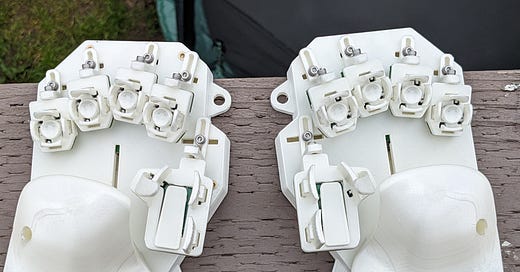



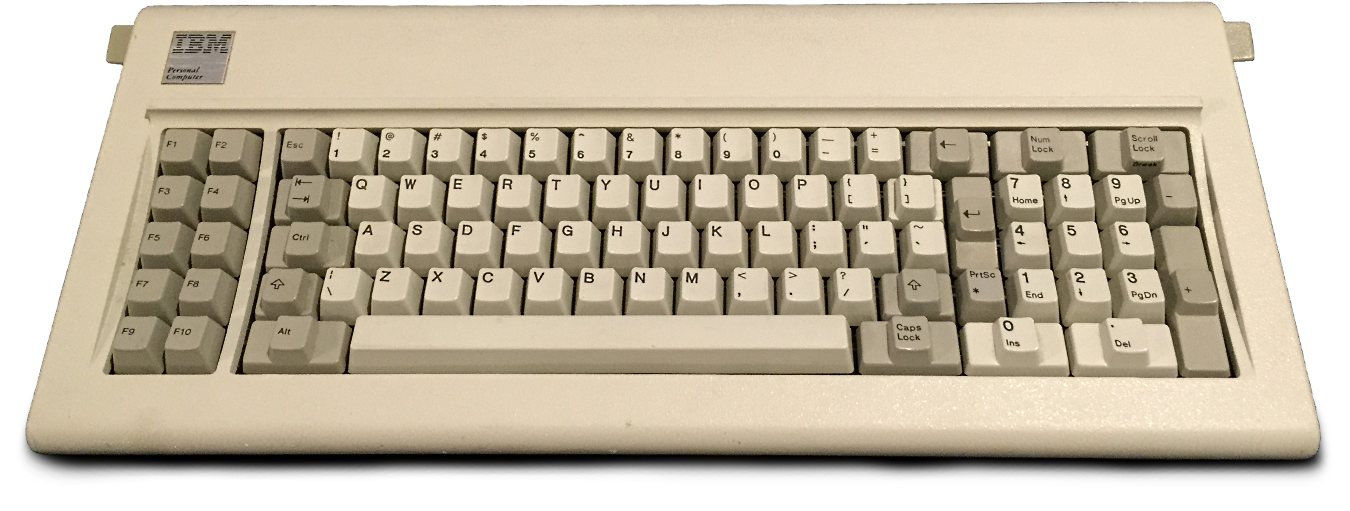
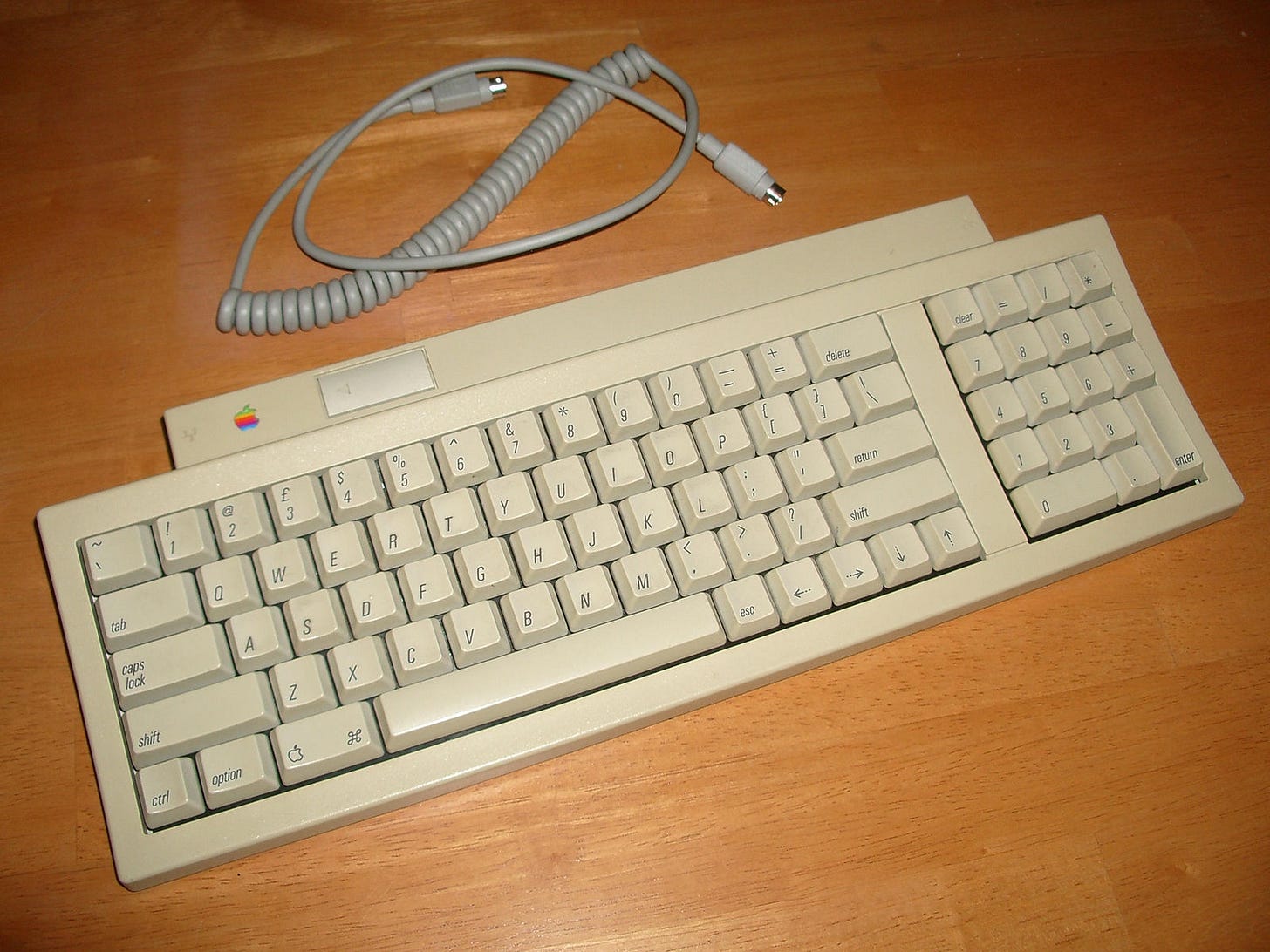






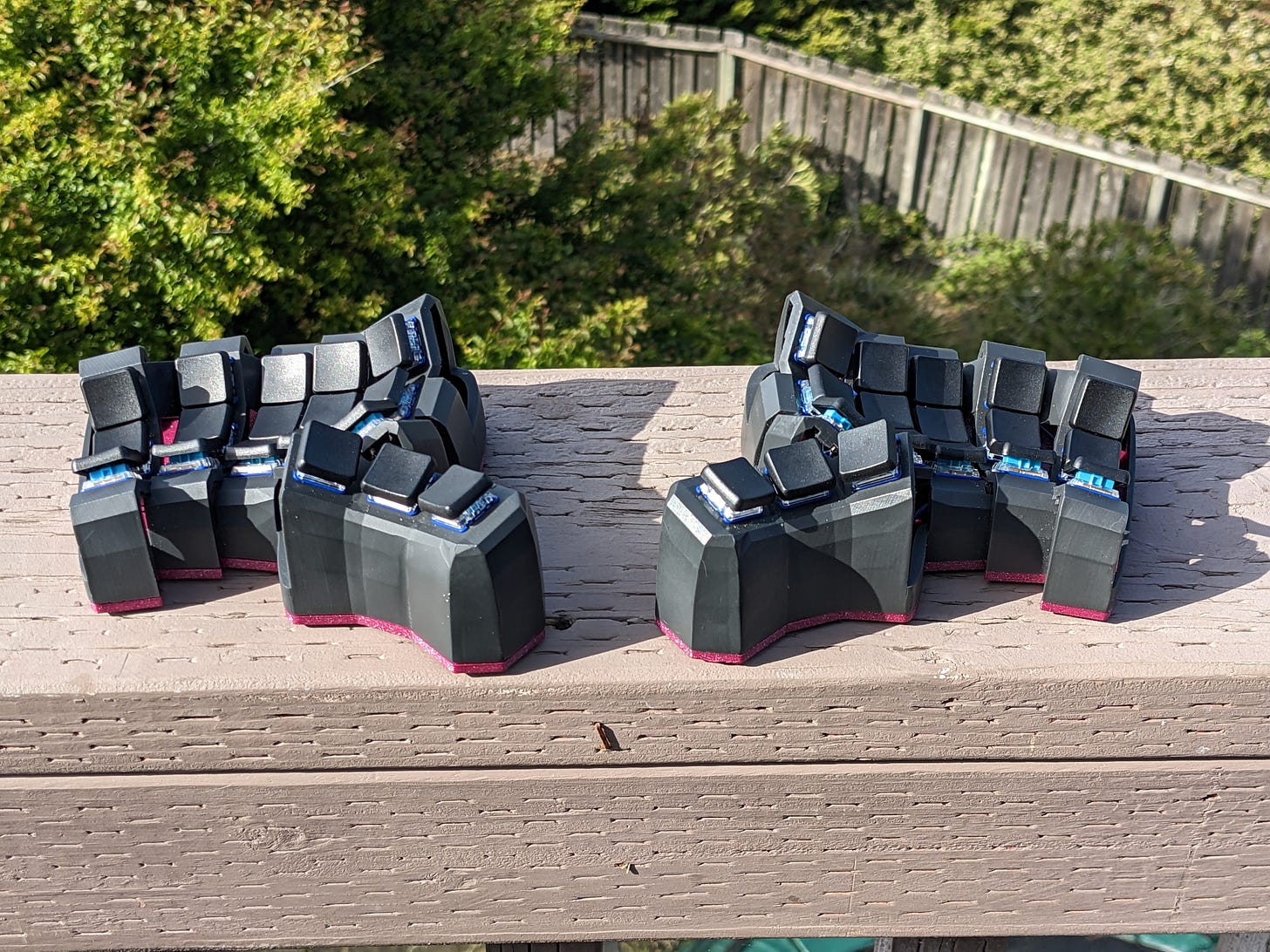
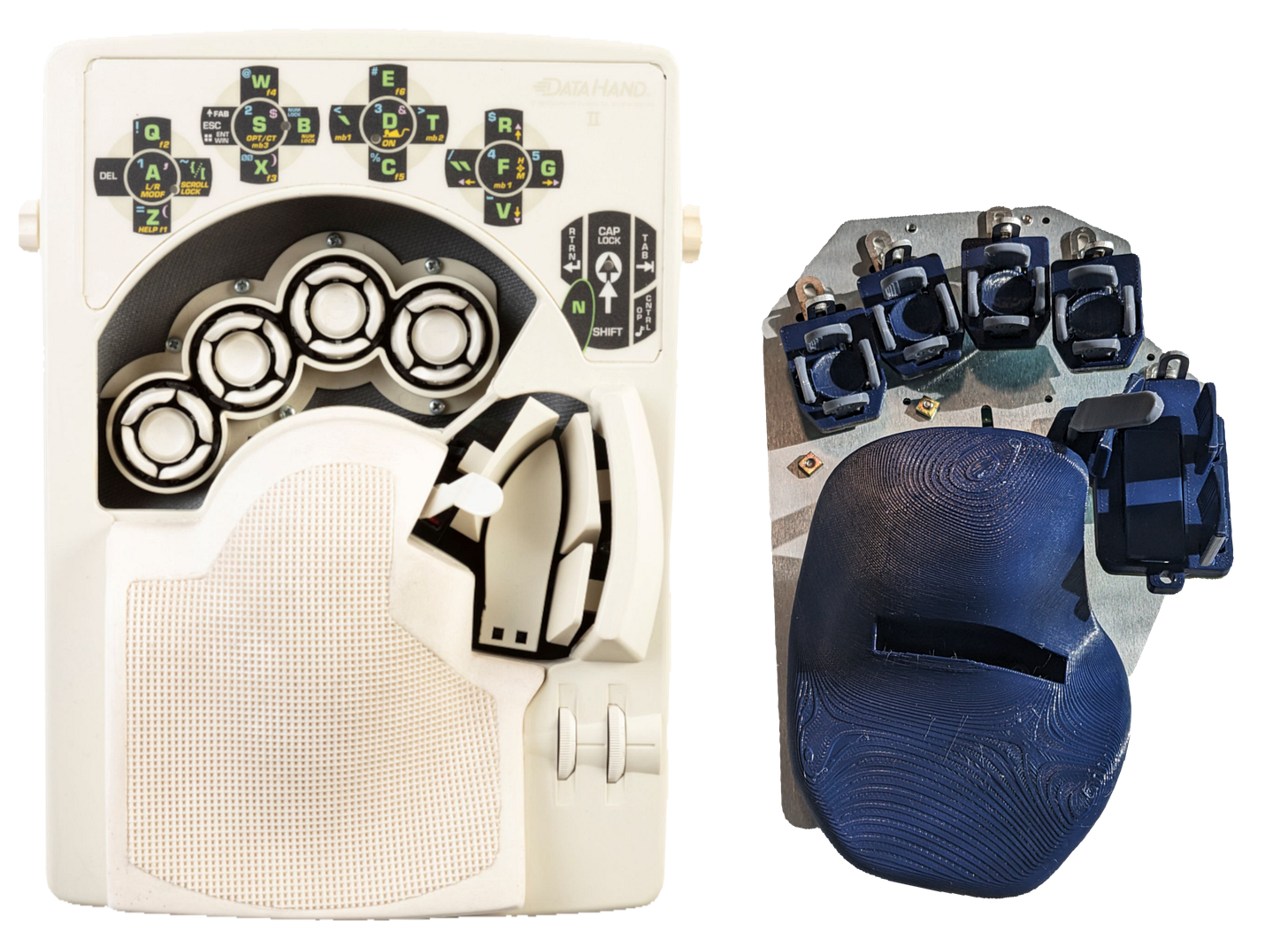

Hi Morgan, This is quite a learning experience for me, seeing what Svalboard is all about. I had never heard of RSI, and had no idea that typing on a QWERTY keyboard could be so painful. I learned to type on a manual typewriter, and used a portable Olympia (which I still have!) through college. I've always sort of missed the pressure of mechanical keys -- it felt productive, like manual labor, pushing those keys all the way through to the platen. Another brand of typewriter that was popular with Hollywood screenwriters, led to the derisive phrase producers used to describe that profession, 'schmucks with Underwoods'. They would have had to find a different line of work if they had RSI. Anyway congratulations on having developed a real product to solve a real problem and seeing it through to paying off -- hopefully big-time.
Love what you're doing here. I have my own custom mech, but I've overloaded my thumbs and RSI is a real fear. The DH, lalboard and svalboard interests me as a real solution. You have an eager supporter in me.